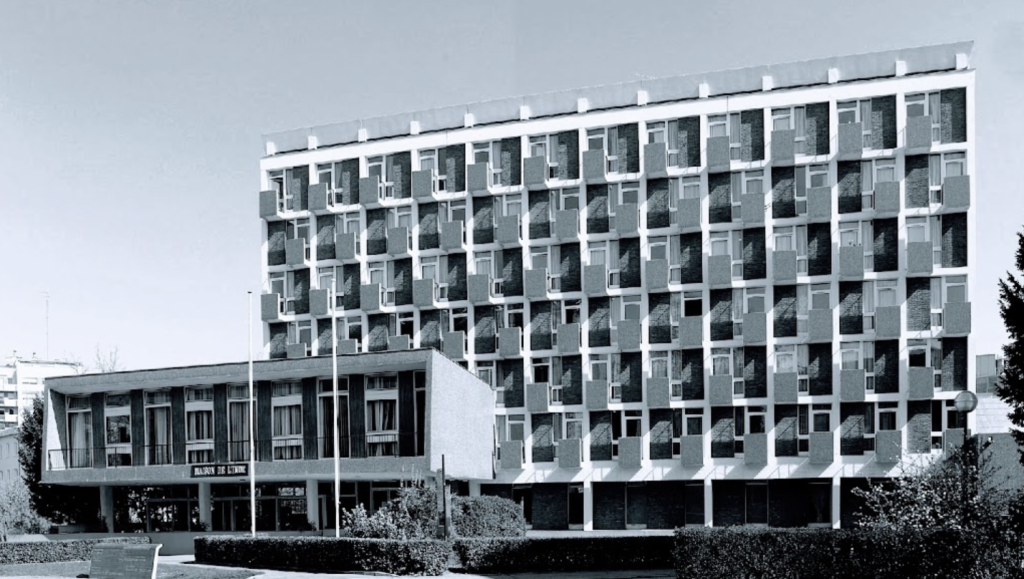
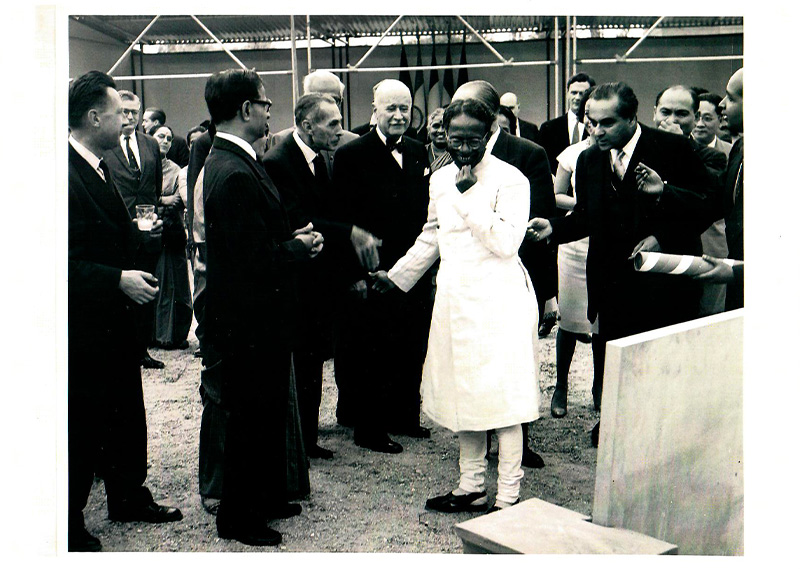
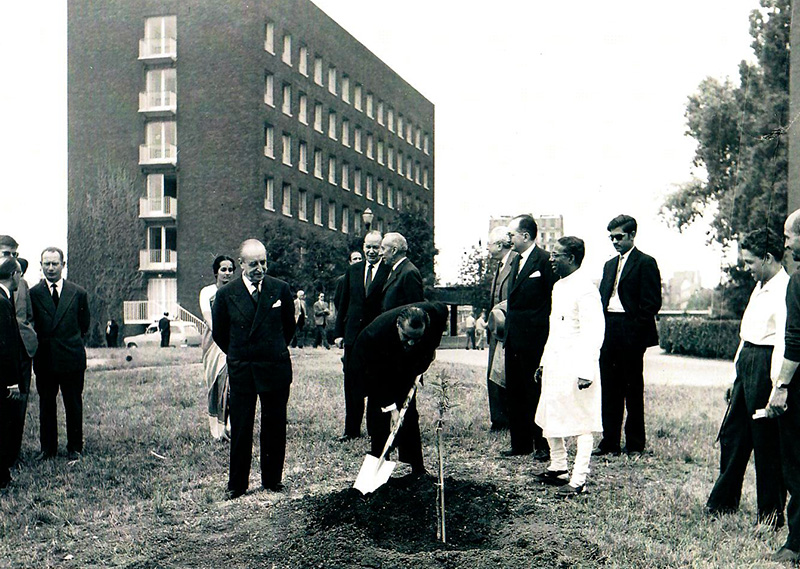
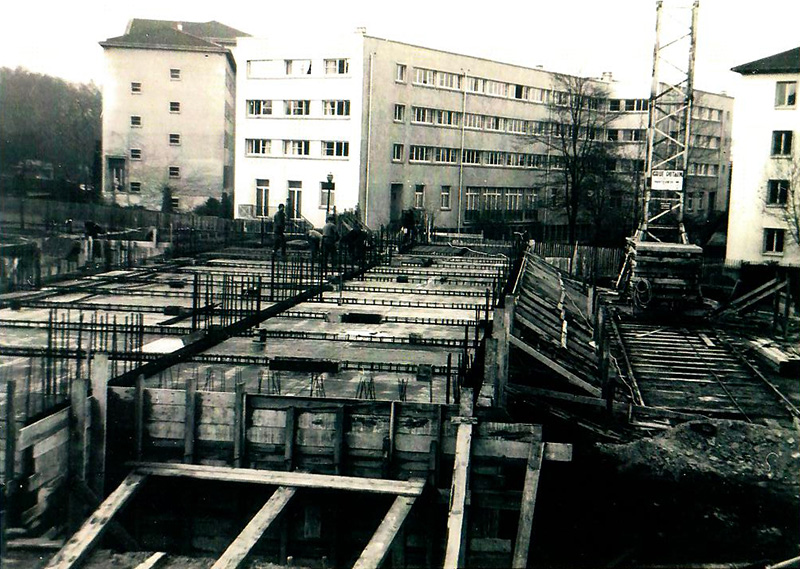
Thirteen years after its independence from the British Empire, the deed of gift of a plot of land for the construction of a Maison de l’Inde within the Cité Internationale Universitaire de Paris was signed in January 1960 by the Indian government, at the instigation of the Indian Ambassador to France, Mr Nedyam Raghavan, and in the presence of Professor Humayun Kabir, then Minister of Scientific Research and Cultural Affaires of India. One of the three trees from the Kashmir region, an oriental plane tree or Chinar, planted on the occasion of the laying of the foundation stone, stands today as a majestic sentinel guarding the house.
A first edifice opened in 1967-1968 by Indian architects J.M. Benjamin and H.R. Laroya, assisted by the French architect G. Leclaire. Reminiscent of the work of other renowned architects from this country still in its infancy, it is distinguished by red brick panels alternating with balconies covered in green mosaic, and two gables covered in purple mosaic, the whole evoking the Indian tricolour in the light of the setting sun. In addition to the accommodation in the main body, there is a forebuilding housing the lobby and a lecture and performance hall dedicated to Indira Gandhi, former Prime Minister of India and one of the world’s first democratically elected female heads of government.

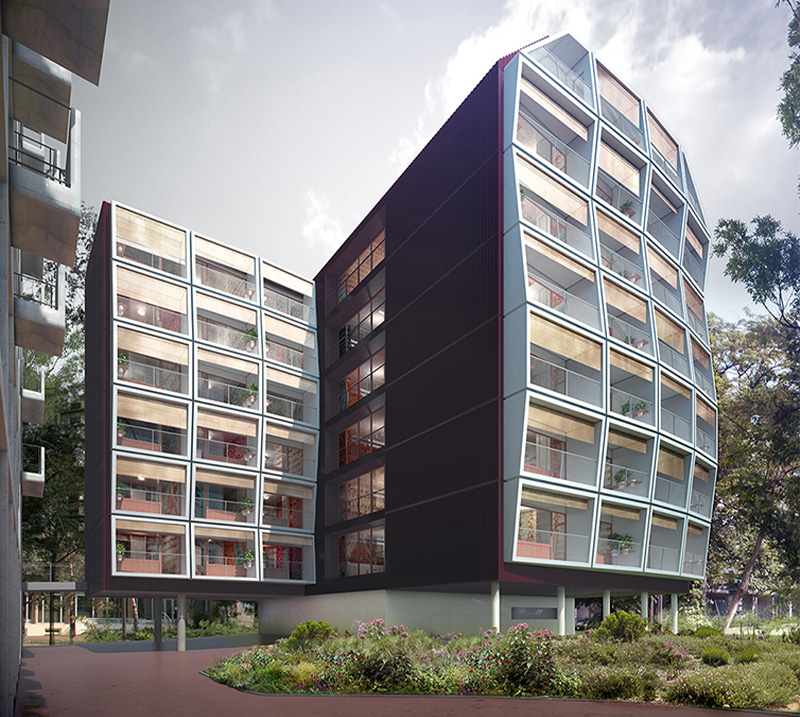
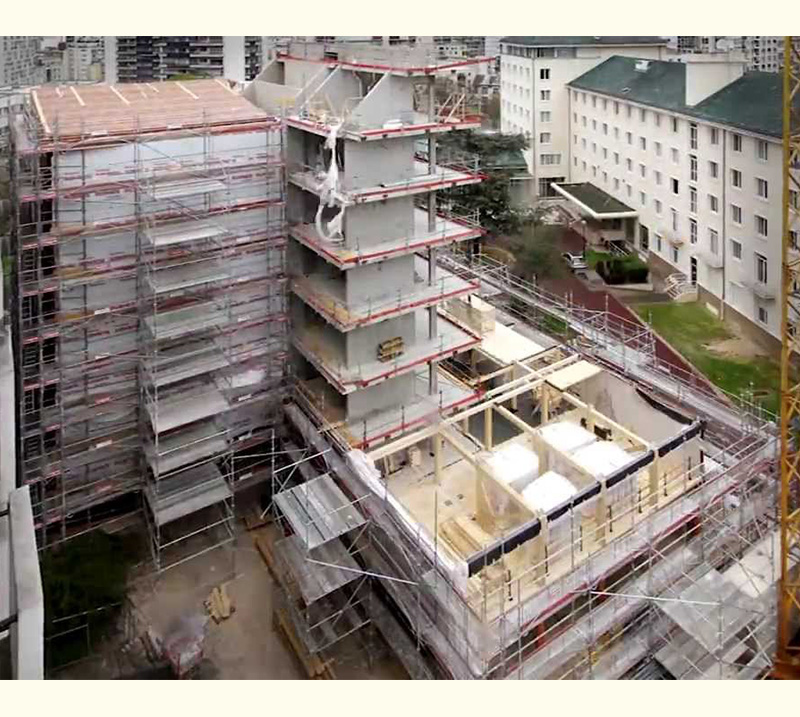
In 2013, an extension with 72 additional rooms was built on an adjacent plot of land by architects F. Lipsky and P. Rollet, during the mandate of Ambassador Ranjan Mathai. Compact, innovative and ecological, it consists of seven floors of prefabricated wooden modules above the ground floor, a design that won the 2014 Trophée Bois Île-de-France for its architects. This building makes India the first country to construct two buildings on campus, and it is also the first building to be constructed in the latest development phase of the Cité Internationale Universitaire de Paris. A meeting room dedicated to A.P.J. Abdul Kalam, scientist and former President of India, is adorned with portraits of renowned Indian scholars to inspire the residents.


In 2013, an extension with 72 additional rooms was built on an adjacent plot of land by architects F. Lipsky and P. Rollet, during the mandate of Ambassador Ranjan Mathai. Compact, innovative and ecological, it consists of seven floors of prefabricated wooden modules above the ground floor, a design that won the 2014 Trophée Bois Île-de-France for its architects. This building makes India the first country to construct two buildings on campus, and it is also the first building to be constructed in the latest development phase of the Cité Internationale Universitaire de Paris. A meeting room dedicated to A.P.J. Abdul Kalam, scientist and former President of India, is adorned with portraits of renowned Indian scholars to inspire the residents.
Both buildings feature works of art representative of Indian history and culture, such as a bust of Swami Vivekananda, a wheel or Chakra, symbolising the world in motion, a bas-relief carved in the style of the Buddhist caves of Ratnagiri, Madhubani and Warli frescoes and paintings by contemporary artists of Indian origin.
Both buildings feature works of art representative of Indian history and culture, such as a bust of Gandhi, a wheel or Chakra, symbolising the world in motion, a bas-relief carved in the style of the Buddhist caves of Ratnagiri, Madhubani and Warli frescoes and paintings by contemporary artists of Indian origin.
1967-1972: Pierre Riché
1972-1980: Maurice Larès
1980-1999: G. V. Rao
2000-2016: Bikas C. Sanyal
2016-2018: Rakesh K. Sharma
2018 to date: Sowmyalakshmi Rasika
1972-1980: Maurice Larès
1980-1999: G. V. Rao
2000-2016: Bikas C. Sanyal
2016-2018: Rakesh K. Sharma
2018 to date: Dr. Sowmyalakshmi Rasika